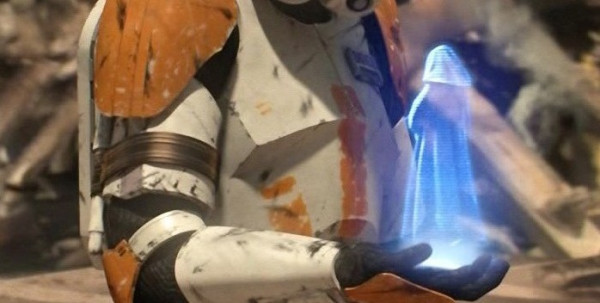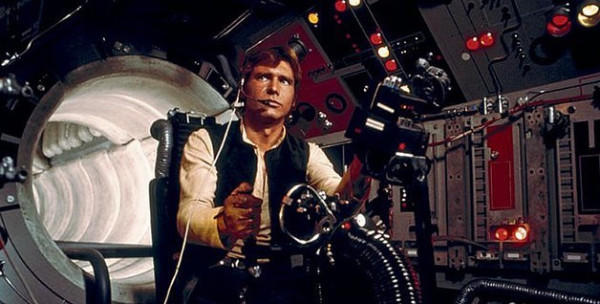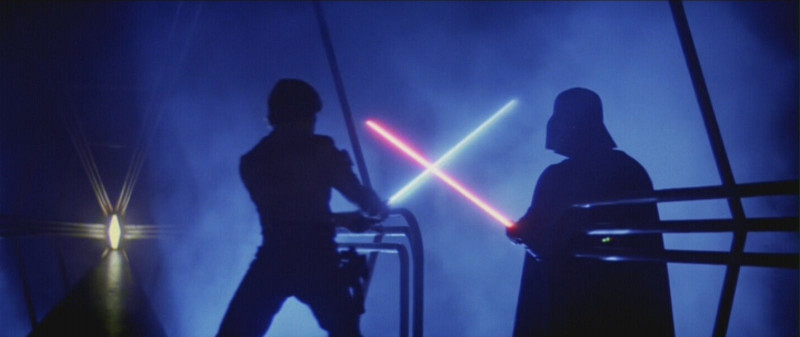
By now, most of you have seen Star Wars: The Force Awakens, possibly multiple times (it’s made $2 billion+ worldwide). The technology in the Star Wars franchise no doubt looked incredibly advanced when A New Hope first released back in 1977. Droids, force-fields, lasers, faster-than-light space travel: George Lucas’s masterpiece had all the necessary trappings of a science fiction epic.
At the same time, re-watching the trilogy now, one can’t help but find everything a little…dated.
Why do droids have to speak to each other vocally instead of interfacing through wireless signals? Why do hyper-advanced space stations like the Death Star and Starkiller Base use archaic analog systems and ancient computing technology? Why is every single hologram in the Star Wars universe blue?
All good questions, right?
Now, before we begin to nerd out in earnest (Ed. Just in time for Silicon Valley Comic-Con), let’s establish one ground rule: We’re only going to be focusing on the official movies and TV shows. That means no novels from the extended universe, no Star Wars video games, and definitely no Holiday Special (see below – we’re still pretending it doesn’t exist, thanks).
 Trust us – it’s better that way.
Trust us – it’s better that way.
Ok. Let’s start with a refresher on some of the tech. After all, it’s been a long time since the first Star Wars film was released. The only technology most of us probably remember is lightsabers and droids.
How Word Travels in A Galaxy Far, Far Away
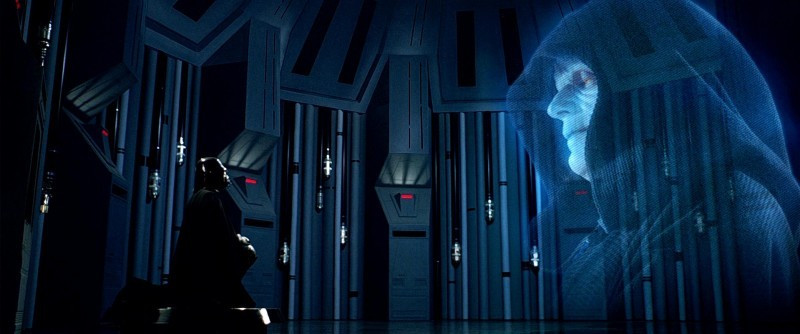
I think all Sith Lords are secretly compensating for something
Admittedly, Lucas had a lot of really cool ideas in terms of how people kept in touch in the Star Wars universe. There was the HoloNet, a galactic communication system that could be used to broadcast news, transmit information, and send messages at speeds apparently faster than light. There were holographic communicators, hand-held devices that projected (glowing blue) images of whoever the holder was talking, and even holographic business conferences.
Here’s where things actually get a little strange. See, communications tech in Star Wars really can’t seem to make up its mind whether it’s advanced or archaic. That’s why we’ve got handheld holograms side-by-side with glorified walkie-talkies, why starships capable of interstellar travel and communications need to use a rat’s nest of copper wiring for their internal comms networks, and why the Death Star’s computers look straight out of the 1960s.
Of course, we’re talking about a universe where battles between mystic, blade-wielding space wizards are a regular occurrence. Things are bound to be at least a little strange, right? And even if a lot of this stuff seems dated, is it?
The best way to figure that out, I think, is to compare it side by side with real-world tech, and see how it measures up – we’ll start with how things in both worlds have developed.
From Maul to Ren: The Evolution of Communication in Star Wars
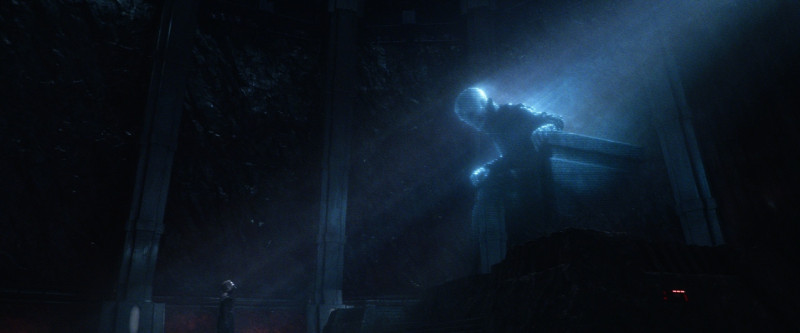 Looks pretty familiar, right?
Looks pretty familiar, right?
During the opening reel of The Force Awakens, we’re informed that 30 years have passed since the Battle of Endor and the defeat of Emperor Palpatine. That’s a long time, especially in the tech world. Think about how much has changed in the real world since 1986:
- We invented the Internet and social media
- We developed smartphones and tablets
- We created cloud computing
- We’re well on our way to developing real holographic communication.
Pretty hefty list, right? With all that in mind, communications tech in Star Wars must have taken several leaps forward too, RIGHT?
Actually…not so much. As a matter of fact, not a whole lot appears to have changed.
First, holograms are more advanced: compare the scenes with Supreme Leader Snoke in The Force Awakens to those with Palpatine in the original trilogy. The only common thread is that both villains appear to be compensating for something, but updated tech means Snoke can compensate even more. Second, the computers in the resistance base are snazzier, and probably more high-tech.
That’s pretty much it. In the real world, we’ve successfully drowned ourselves in Snapchat, selfie sticks and emojis. Star Wars has none of those lovely amenities – what gives?
Militarism vs. Consumerism
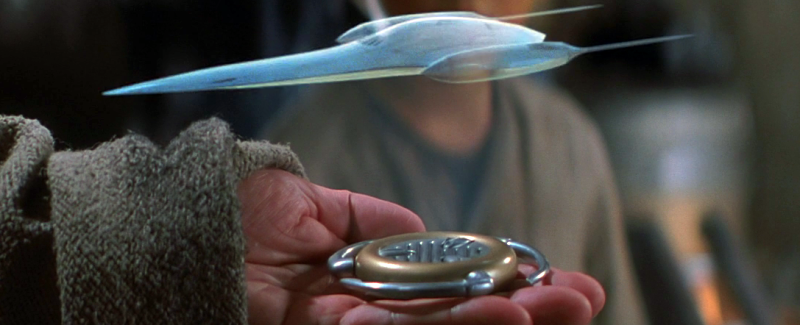 Pictured: not a children’s toy.
Pictured: not a children’s toy.
Star Wars is a space opera– it’s about warfare, it’s about adventure, it’s about the thrill of exploring a galaxy far, far away. Most of the technology we see has a military application of some kind. There are a few reasons for that.
First, because the galaxy is embroiled in a perpetual conflict, leaders and decision-makers are more concerned with military tech. There’s real-world precedence for that, actually. The global climate during World War II is just one example (though most wartime inventions saw later use as consumer devices)
 Star Wars protagonists aren’t exactly the sort of people who take selfies.
Star Wars protagonists aren’t exactly the sort of people who take selfies.
Second, the story is told through the eyes of swashbucklers, soldiers, and Jedi knights. That’s what we show up to watch – the rousing story of Ben “Obi-Wan” Kenobi’s struggles against the dark side, not Ben from accounting’s struggles to balance the budget. On planets like Coruscant, Naboo or Bespin, there could well be a thriving market for consumer tech; there very well could be gadgets like smartphones and tablets, but since the heroes don’t really use the tech or engage with the market, we don’t see it.
Finally, over the course of the films, we see the rise and fall of a galaxy-spanning, brutal dictatorship. Such things rarely occur without leaving some serious scars. The reason we’ve seen so little technological development could well be because everyone was more focused on rebuilding what the Empire and the Sith destroyed (and they destroyed a lot).
If It Ain’t Broke, Don’t Fix It
There may be another reason the technology in Star Wars has changed so little between movies: it’s advanced enough that it doesn’t need to. Even though it might appear archaic, the technology in Star Wars is actually significantly more advanced than ours – it just emphasizes function over form, and is designed for reliability and utility.
Put another way, it may be ugly, but it still works.
 Kind of like Darth Maul
Kind of like Darth Maul
I’ll give an example: In the real world, we have the Internet, a global communications system that lets us instantly speak to someone on the other side of the world. In Star Wars, they have something very similar…except that it exists on a galactic scale. It’s called the HoloNet, and it was the primary means of communication between Imperial forces during the war.
In the real world, it’s been predicted that we might run out of airwave space by 2020. In Star Wars, there are thousands of billions of sentient beings, meaning signal interference could be a very real problem. There’s also a lot of radiation in space – so again, signal interference.
The fact that the HoloNet works at all seems almost like magic, doesn’t it?
Our technology might be prettier, more compact and more user-friendly than the stuff in Star Wars. But it’s not more advanced. Not by a long shot. We’re getting there, though – slowly but surely, we’re turning science fiction into science fact.
In the meantime, we can dream about what’s yet to come while watching mystical space knights beat the tar out of each other – because at the end of the day, isn’t that what Star Wars is really about?
